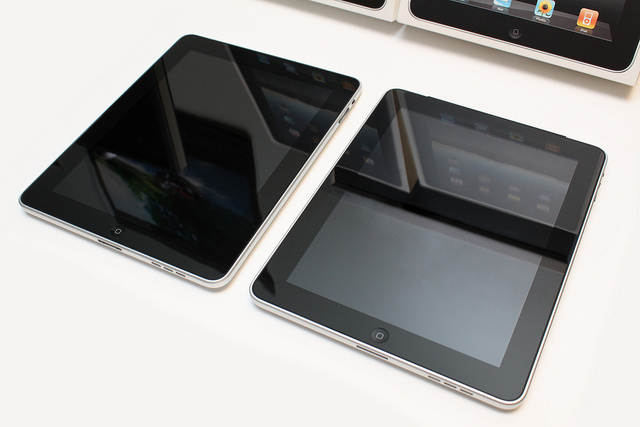
With the iPad ascendent, it’s time to ask if publishers are doing enough to shift with consumer expectations in an era where the desktop is far from the only digital media outlet in town.
The majority of magazine publishers simply port their print products to iPad apps with minor additions or tweaks. Even most online-centric publishers are doing little with the opportunity. Few have tablet-specific sites or make any use of the touch interface tablets offer. Desktop sites render well on the iPad, but why not build an experience designed exclusively for that audience?
Of course, even with the explosive sales of iPads, tablet audiences remain relatively small compared to those of print or the desktop Internet, but they’re growing fast, driven by the iPad but and aided by the addition of more affordable entrants such as the Kindle Fire. According to estimates from eMarketer, 13.2 percent of the U.S. population will use an iPad at least once a month in 2012, up from just 3.7 percent that did so in 2010. Yesterday’s price drop of the iPad2 will probably help contribute to that increase, too.
More importantly, tablet audiences are often growing at the expense of other channels, so whether it’s sooner or later publishers need to adapt to their audience’s behaviors. Websites were for magazine publishers mere additions. Few people were giving up Vogue for Vogue.com. But it’s clear that’s happening with tablets.
“The number of tablet users will continue to grow significantly, accelerating demand for reader-attractive content,” predicted Mitch Klaif, CIO if Time Inc. following the decision it made earlier this year to publish its 21 U.S. titles across numerous tablet platforms. He added that the move would put the company “in a great position to take advantage” of tablet opportunities.
But the fact of the matter is that most publishers are simply following their audiences, as opposed to getting out ahead of them. Apple itself touted the opportunities the iPad would present for publishers specifically, but developers in other categories such as gaming and utilities have really been the ones to make the most of the device.
Other than a few examples of interesting interactive experiences such as those offered by Wired’s iPad app and at times The Daily, most publishers are doing little to build truly tablet-focused editions and experiences.
That goes for advertising, too. Tablets open up a range of highly visual and interactive creative opportunities, and offer publishers the chance to start over with their approaches to the way advertising is sold and delivered. In most instances, though, ads – like the content they’re adjacent to – are simply print assets displayed on a digital screen. That seems like a missed opportunity.
There are revenue opportunities in tablets beyond just advertising and subscriptions, though, so instead of publishers just migrating their print and Web business models to devices such as the iPad perhaps they should experiment more with opportunities around commerce, in-app micropayments, and sponsorships, which have proved successful in areas such as gaming.
Ultimately, despite the hype it seems most publishers are still struggling to adapt their businesses to tablet-first audiences. It’s early days, of course, but it seems inevitable that audiences will switch to tablets to consume much of the content they currently access in print or on the Web. As a result, publishers should be more creative with their approaches to the medium, in order to capitalize when they do.
More in Media

From sidelines to spotlight: Esports events are putting creators center stage
Esports events’ embrace of content creators reflects advertisers’ changing priorities across both gaming and the wider culture. In the past, marketers viewed esports as one of the best ways to reach gamers. In 2025, brands are instead prioritizing creators in their outreach to audiences across demographics and interest areas, including gaming.

Condé Nast and Hearst strike Amazon AI licensing deals for Rufus
Condé Nast and Hearst have joined the New York Times in signing a licensing deal with Amazon for its AI-powered shopping assistant Rufus.

Media Briefing: AI payouts may be entering a new era
AI compensation is evolving — and new models, not just publisher demands, are driving the shift beyond flat-fee licensing.





